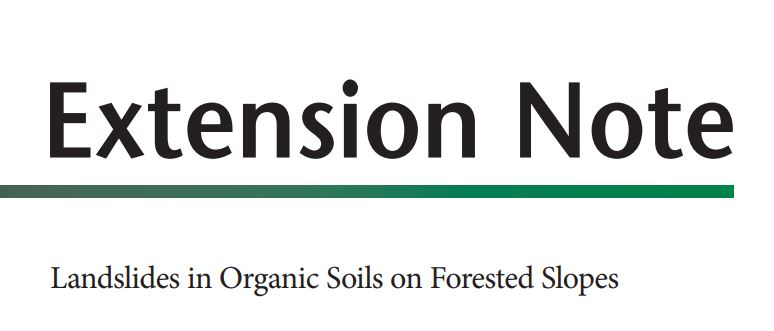Coastal Landslides in Organic Soils Study
The coastal landslides in organic soils study discusses organic soil landslide hazards and alternative management strategies for road construction in organic soils.
On this page:
Overview of coastal landslides in organic soils
Organic soils in cool and wet areas of Coastal British Columbia present dangers to forest workers unaware of their landslide potential. These soils can be very sensitive to disturbance such as machine vibration. Landslides can even occur on gentle slopes not usually subject to landslides if other soil types are present.
Forest workers need to be aware of these coastal soils and their potential for landslides. This includes:
- Knowing how to identify organic soils
- Understanding potential organic soil landslide triggers
- Have alternate forest operations strategies in mind when organic soils are encountered
Objectives and findings of the study
The overall objectives of this study were:
- Increase awareness and understanding of where coastal organic soils may be found and the dangers they pose
- Provide detailed operational guidelines to prevent future landslides
- Improve worker safety
- Decrease road construction and site rehabilitation costs
Findings from the study were:
- Organic soils are most common in the hypermaritime and maritime variants of the Coastal Western Hemlock biogeoclimatic zone, including northern Vancouver Island and the outer mainland coast area north of Powell River
- Coastal organic soils are subject to landslides, even on shallow gradient slopes
- Heavy equipment operating on coastal organic soils may initiate a landslide, and the machine and operator may be involved in the landslide
- Forest operators and terrain stability assessors need to be aware of the potential for coastal organic soils and how to recognize them. Awareness of organic soils is key for worker safety
- Road construction and harvesting practices need to be adapted for areas of organic soils

